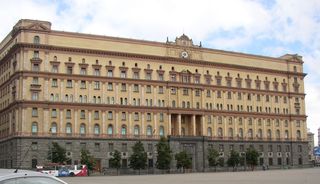
Fear
Predictable Paranoia in Tyrannical Minds
"I don’t trust anybody. I don’t even trust myself,” Stalin told Khrushchev.
Posted June 1, 2019
Stalin respected Franklin Roosevelt. The Soviet leader ordered the news of FDR’s death and details about his funeral published in Pravda, the official newspaper of the Communist Party. The Soviet leader also wrote a letter of condolence to FDR’s widow, Eleanor.
“After a few lines of sympathy, the Soviet dictator implied that [FDR] had been poisoned, and he went on to offer his assistance in any investigation that Mrs. Roosevelt might conduct,” Robert S. Robins and Jerrold M. Post, M.D., write in their book Political Paranoia, The Psychopolitics of Hatred. “Apparently, etiquette in Stalin’s Kremlin included suggesting the possibility of murder to a grieving widow and encouraging her to find the perpetrator.”
Paranoia as a problem
Six years later, in 1951, Stalin’s paranoia had, if anything, worsened as indicated by his behavior while on vacation. Vacations with the Soviet tyrant could be, understandably, less than completely relaxing for guests. That is something Nikita Khrushchev and Anastas Mikoyan, members of Stalin’s inner circle, knew firsthand. In his memoir, Khrushchev remembered when he and Mikoyan were the tyrant’s guests in Novy Afon, a town on the Black Sea. One evening, Stalin walked out of his vacation home and stood alone. His guests hurried to his side. Directing his piercing gaze at Khrushchev, Stalin said, “I’m a rotten person. I don’t trust anybody. I don’t even trust myself.”
Khrushchev and Mikoyan wisely said nothing. After an awkward silence, normal conversation resumed.
Khrushchev did not forget this instance of Stalin’s introspection. He later attributed Stalin’s purges and crimes to the tyrant’s extreme paranoia. “The fact is he never really trusted anyone,” Khrushchev concluded in his memoir.
As Stalin began to suspect someone, he would watch his future victim more and more closely. After a while, according to Khrushchev, the level of mistrust would reach a critical point, “and their turn would come to meet a sorry end; they would join the ranks of the departed.”
The other guest along with Khrushchev on that memorable vacation in Novy Afon, Anastas Mikoyan, soon became a target of Stalin’s paranoia. Mikoyan had worked with and supported Stalin for nearly three decades. He was loyal. This did not matter to the suspicious tyrant. Stalin began to criticize his old comrade. Mikoyan knew he was doomed. Only Stalin’s death in 1953 saved him. It potentially also saved untold thousands of other innocent victims from an impending new purge, which Stalin began planning months before he died.
The planning began when one of the Soviet leader’s personal physicians suggested to his patient that he delegate more of his workload to others for the sake of his health. The advice was interpreted by the paranoid leader as clear evidence of a plot against him. Accused of plotting to poison him and other Soviet officials, Jewish doctors were arrested. The Lubyanka Prison, the legendary site of the torture and murder of Soviet dissidents and other victims, was about to see another influx of “enemies of the people,” as it had during previous purges.

Stalin’s death on March 5, 1953—presumably following a stroke two months after his doctor suggested he not work so hard—averted the purge of “The Doctor’s Plot,” and may have averted a horrific pogrom in the Soviet Union.
Stalin, of course, was not the only tyrant to demonstrate significant paranoid traits. One of Mao Zedong’s physicians, Dr. Li Zhisui, first noticed signs of paranoia in Chairman Mao when Mao was 65 years of age. Mao claimed his swimming pool was poisoned. Seven years later, Mao complained that one of his houses was “poisonous.” Later, he feared someone was hiding in the attic of another house in which he stayed. Some cats were evicted from the attic, but Mao moved to a new residence anyway. Days later, he moved again. A year later, he declared that one of the buildings in his personal compound in Beijing was poisoned. Dr. Li, who served as Mao’s physician for over two decades, said Mao’s paranoia lasted until the tyrant’s death at age 83 in 1976.
Paranoia as a survival tool
Despite indications that paranoid thinking can produce stress in tyrants, it can also, under the right conditions, be helpful. Along with Machiavellianism and anti-social traits like lack of remorse and lack of empathy, paranoia can help dictators survive.
Efraim Karsh and Inari Rautsi interviewed a personal guest of the Iraqi tyrant for their book, Saddam Hussein: A Political Biography. Not long after taking power in 1979, Saddam calmly explained to his guest that he knew that “there are scores of people plotting to kill me and this is not difficult to understand. After all, did we not seize power by plotting against our predecessors? However, I am far cleverer than they are. I know they are conspiring to kill me long before they actually begin planning to do it. This enables me to get them before they have the faintest chance of striking at me.”
Years before they became haunted by “Doctor’s Plots” and “poisonous” houses, Stalin and Mao may have benefited when their suspicions led them to imprison and murder untold numbers of innocent people and, perhaps, some guilty plotters. To kill many innocent victims to get one plotter is in the best interest of the tyrannical mind. For tyrants, the benefits and drawbacks of paranoid thinking are a matter of degree.
References
Robbins, R. S. and Post, J. M. (1997). Political Paranoia, The Psychopolitics of Hatred. New Haven, CT: Yale University Press.
Khrushchev, N. (2006). Memoirs of Nikita Khrushchev: Volume 2, Reformer [1942–1964], trans. by George Shriver. University Park, PA: The Pennsylvania State University.
Li Zhi-Sui (1996). The Private Life of Chairman Mao. New York: Random House.
Karsh, E. and Rautsi, I. (2002). Saddam Hussein: A Political Biography. New York: Grove Press.

